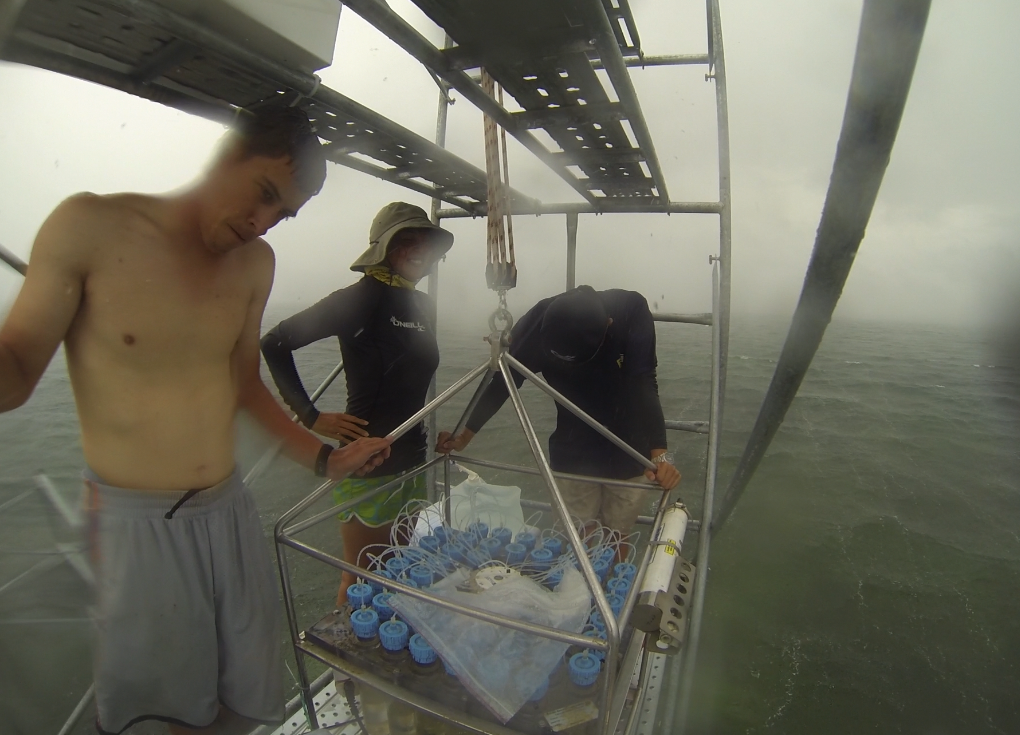 |
Kanmin, of the Dongsha Atoll Marine National Park, helps
us collect a core of skeleton from a massive coral colony.
In this photo, Kanmin is using a pneumatic drill to drive a
drillbit into the skeleton. The black hose is connected
to a spare SCUBA tank that powers the drill.
|
Our measurements of net ecosystem calcification (NEC) and our observations of coral bleaching, though incredibly valuable, are brief snapshots of Dongsha Atoll. We can also learn a lot about the reef from a longer term perspective. How have calcification rates on Dongsha changed in the past, and why?
Ideally, we could repeat our expedition year after year to see how calcification on the reef changes under different climate conditions. But I do need to write a thesis, so we need a different approach. One alternative is to use the growth histories preserved within the skeletons of massive corals living on Dongsha.
 |
CT scans of corals collected from Green
Island, southeast of Taiwan. The
alternating light and dark bands are
high and low density bands, respectively.
Each year, one pair of high and low
density bands form, providing a timescale
to interpret past growth rates. Counting
back the bands, and measuring the distance
between them, tells us how growth rates
have changed over the past several decades.
|
How do corals tell us about the past? Corals are constantly building their skeletons, the colony grows larger year after year. Yet corals respond to their environment, building skeleton of different density during different seasons of the year. This seasonal rhythm of skeletal density creates an intrinsic timescale within the skeleton, analogous to tree rings. As the colony continues to grow outward, the growth history of past decades, and sometimes even centuries, is preserved within the interior of the colony.
To access this information, we use underwater pneumatic drills to collect cores of skeleton from living coral colonies. Don't worry, we patch up the holes with cement and underwater epoxy and the coral grows over our plug in about a year. Back in Woods Hole, we send our cores through a
CT scanner, which gives us a 3D map of skeletal density. Using software developed in our lab, we use the annual density banding to reconstruct coral growth rates in the past.
This information tells us how coral calcification on Dongsha changed during especially warm or cool years, or whether calcification is increasing or decreasing with time. Corals even form anomalous bands when they recover from bleaching, so we can tell when these corals have bleached in the past. How unusual is the bleaching event that we are seeing right now? Our cores will help answer that question.
- Tom DeCarlo
Joint Program in Oceanography
Woods Hole Oceanographic Institution














